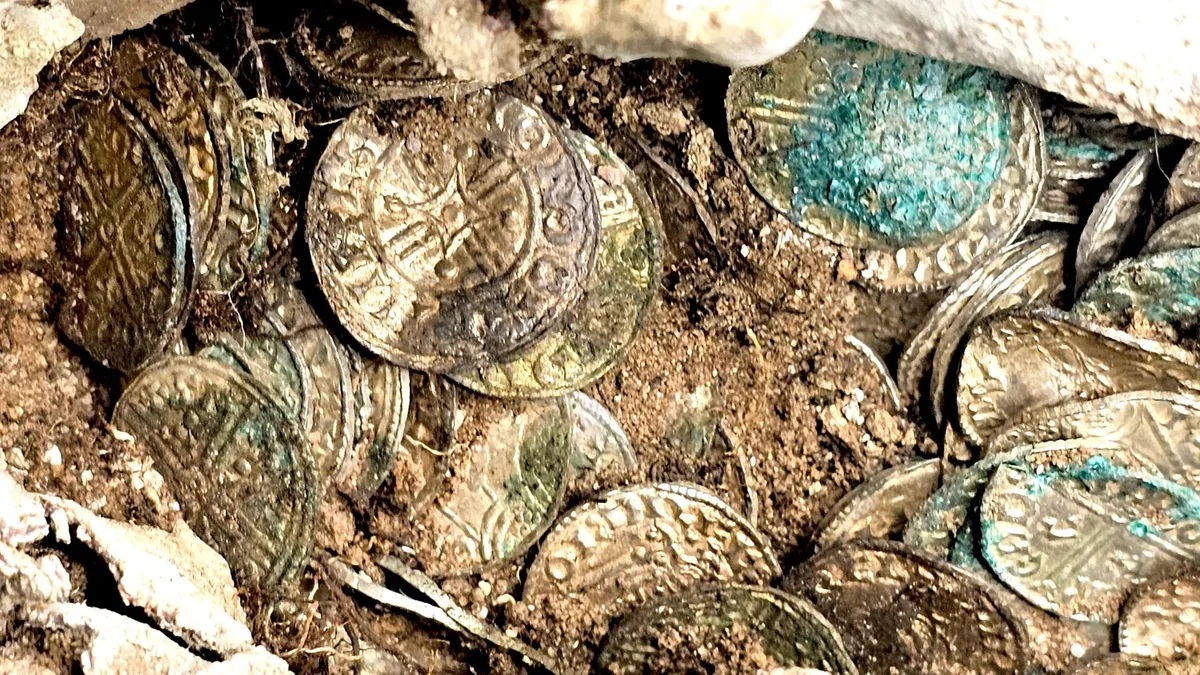(NLDO) - "I was shaking when I first excavated it" - an archaeologist said about the treasure accidentally found in Suffolk county - England.
During a survey for a nuclear power plant in Suffolk, an archaeological team from Oxford Cotswold Archaeology (OCA) found a large treasure trove wrapped in cloth bags and lead sheets.
The hoard consists of 321 silver coins minted between 1036 and 1044, coinciding with the beginning of the reign of the Anglo-Saxon King Edward the Confessor.
It was a tumultuous period in English history when the king exiled and confiscated the property of some of the elite who had fallen out of his favor.

Close-up of coins inside the treasure trove recently excavated in England - Photo: OCA
"Perhaps the treasure owners were concerned about the new regime, the political situation and escalating social unrest, so they took steps to hide their wealth," archaeologist Alexander Bliss, a coin expert at the OCA, told Live Science.
In the 11th century, this amount of money was already a large fortune, enough to buy 16 cows. Today, with their thousand-year age and special historical value, they have become priceless treasures.
Even the bag containing the coins is considered a treasure, according to archaeologists. They are investigating whether the lead sheet used to wrap the coins was part of something larger, which could reveal more data.
“I was shaking when I first excavated it,” said OCA archaeologist Andrew Pegg.
Based on the archaeological record, lead plates were not an uncommon method of storing coins during that period, but the choice of this relatively sturdy material raises the question of why the owner did not use something simpler, such as a pot.
It could also be that the person is simply trying to disguise their assets more carefully.
The archaeological team also believes that the owner of the treasure was likely a person of average status, rather than an elite or someone of national importance.
The person may have had local influence and thus feared the consequences of a change of regime, so he buried the treasure after the coronation of King Edward the Confessor.
Source: https://nld.com.vn/kho-bau-ngan-nam-lo-ra-giua-cong-truong-nha-may-hat-nhan-196250113100741233.htm



































































































Comment (0)